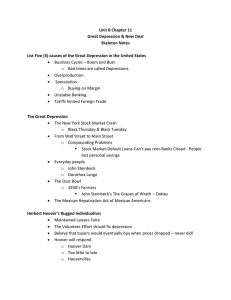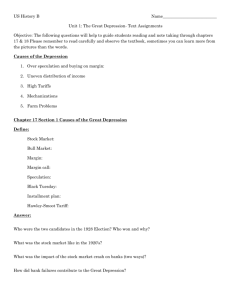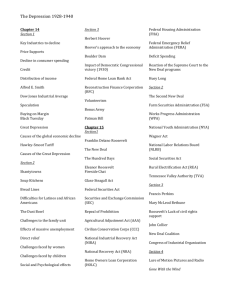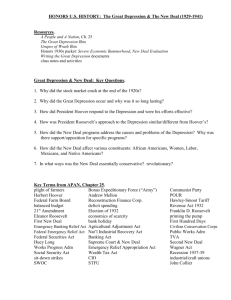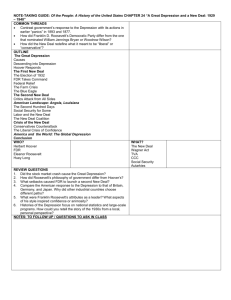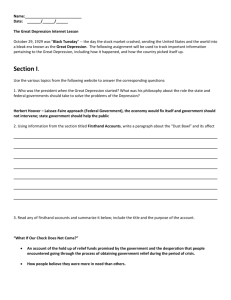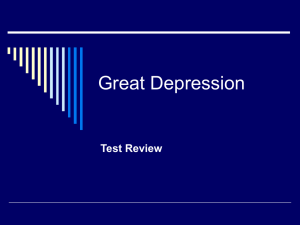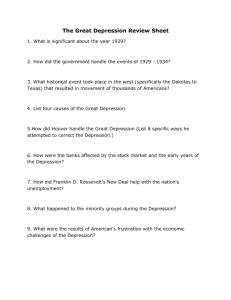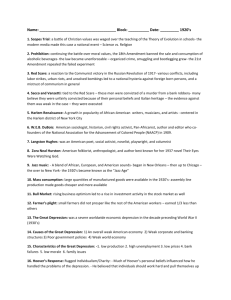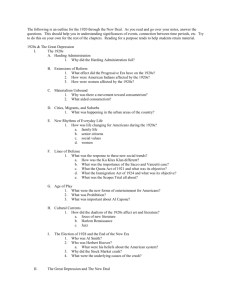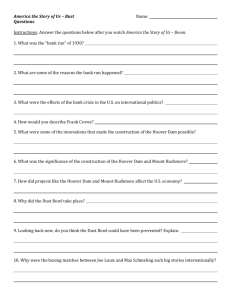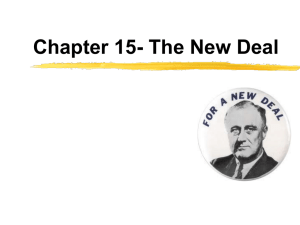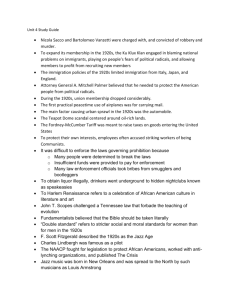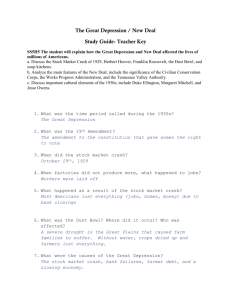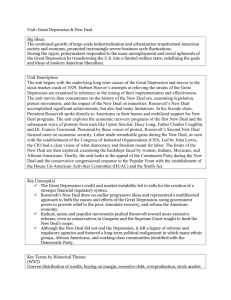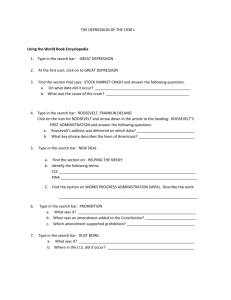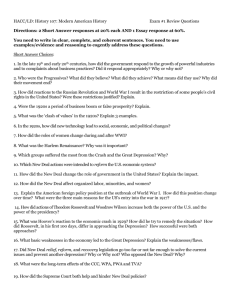Unit 8 Skeleton Notes
advertisement
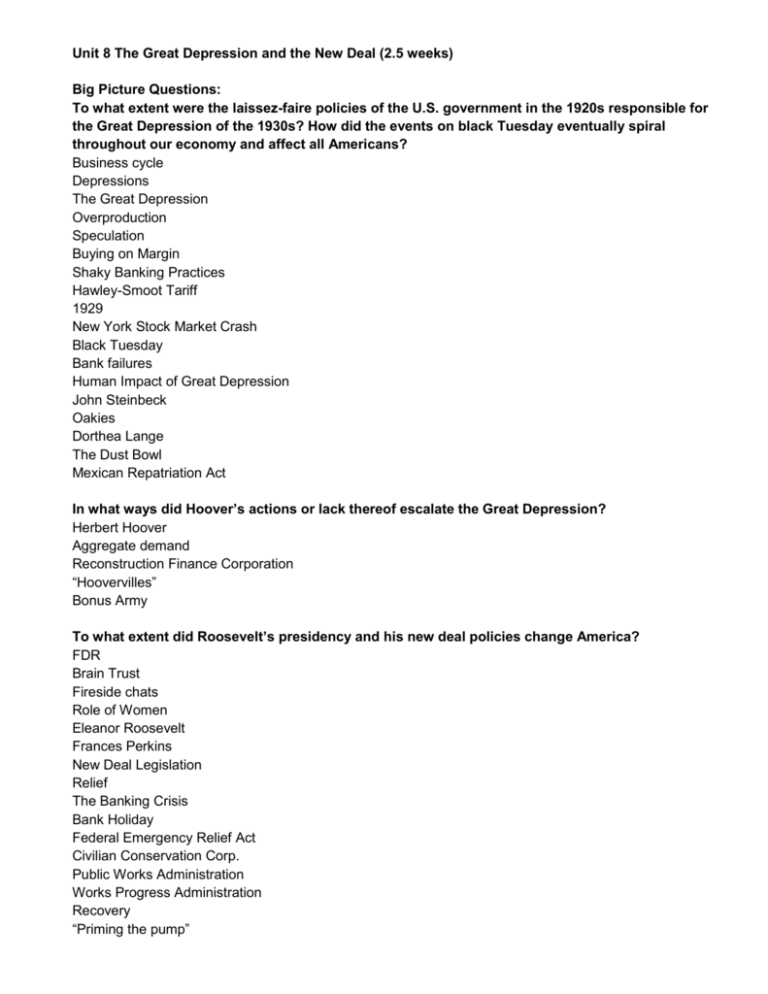
Unit 8 The Great Depression and the New Deal (2.5 weeks) Big Picture Questions: To what extent were the laissez-faire policies of the U.S. government in the 1920s responsible for the Great Depression of the 1930s? How did the events on black Tuesday eventually spiral throughout our economy and affect all Americans? Business cycle Depressions The Great Depression Overproduction Speculation Buying on Margin Shaky Banking Practices Hawley-Smoot Tariff 1929 New York Stock Market Crash Black Tuesday Bank failures Human Impact of Great Depression John Steinbeck Oakies Dorthea Lange The Dust Bowl Mexican Repatriation Act In what ways did Hoover’s actions or lack thereof escalate the Great Depression? Herbert Hoover Aggregate demand Reconstruction Finance Corporation “Hoovervilles” Bonus Army To what extent did Roosevelt’s presidency and his new deal policies change America? FDR Brain Trust Fireside chats Role of Women Eleanor Roosevelt Frances Perkins New Deal Legislation Relief The Banking Crisis Bank Holiday Federal Emergency Relief Act Civilian Conservation Corp. Public Works Administration Works Progress Administration Recovery “Priming the pump” National Recovery Administration Agricultural Adjustment Acts Reform Federal Deposit Insurance Corporation Tennessee Valley Authority Securities and Exchange Commission Social Security Act Monetary Policy Money Supply Federal Reserve Act Inflation Gold standard Fiat money Impact on Labor Norris-LaGuardia Act National Industrial Recovery Act Wagner Act What were some of the criticisms of the New Deal? Liberty League Francis Townsend Huey Long Father Coughlin Supreme Court and the New Deal National Industrial Recovery Act Agricultural Adjustment Act Schechter Poultry v. U.S. Roosevelt’s Court Packing Plan Effects on state and federal governments Instructional Focus: In this unit we will examine how the prosperity of the 1920s was suddenly cut off by the Great Depression. The first items we will examine are the causes of the Great Depression, including those from the 1920s and the more immediate stock market crash that led to a chain reaction that toppled the American economy and quickly spread to the rest of the world. As part of this you should examine lots of photos, especially those of Dorthea Lange and perhaps read brief excerpts from Steinbeck’s “The Grapes of Wrath”. You will then briefly discuss President Hoover’s response to the Great Depression and the public responses to Hoover. The focus will then shift to studying FDR, the role of women, and New Deal legislation and the goals of relief, recovery, and reform. Emphasis should be made that not all Americans agreed with Roosevelt’s plan and this would be a great opportunity to pull in political cartoons that criticize Roosevelt’s policies. Students should understand the long term change the new deal made to the role of the federal government and its legacy of government agencies, regulations, and programs that remain with us today. Suggested Resources: New Deal “snowball fight”- Put New Deal “alphabet soup” policies on pieces of paper. Wad them up and have a snowball fight. At the end of the snowball fight the students keep one “snowball” and research the policy on that sheet of paper. then the student categorizes the policy as Reform, Recovery, Relief and tapes it to the correct category. Students then record (chart or picture) of the categorization.
